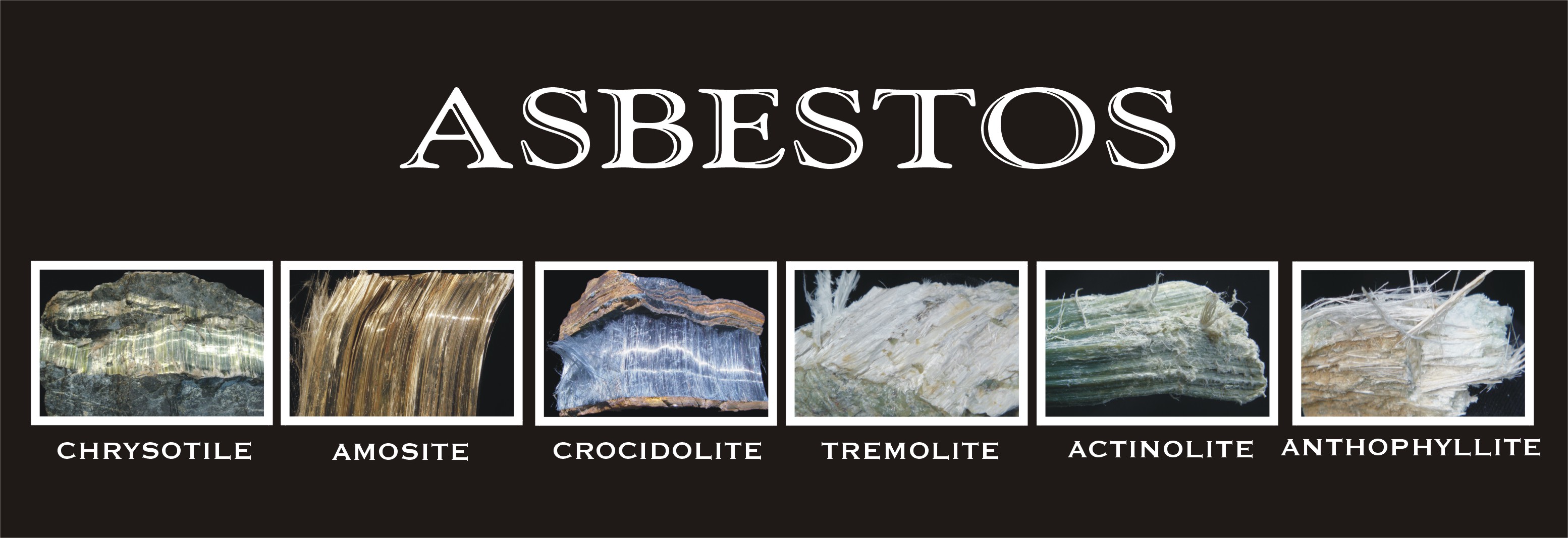
What is Asbestos?
Asbestos is the name applied to a group of naturally occurring minerals that are mined from the earth. The six different types of regulated asbestos are:
- Amosite
- Chrysotile
- Tremolite
- Actinolite
- Anthophyllite
- Crocidolite
Of these six, three are used more commonly. Chrysotile is the most common, but it is not unusual to encounter Amosite, or Crocidolite as well. In many instances, a single product will have a mixture of different asbestos types. All types of asbestos can break into very tiny fibers. These individual fibers can be broken down so small that they can only be identified using an electron microscope. Some individual fibers may be up to 700 times smaller than the diameter of a human hair.
Because asbestos fibers are so small, once released into the air, they may stay suspended there for hours or even days. Asbestos fibers are also virtually indestructible. They are resistant to chemicals and heat, and they are very stable in the environment. They do not evaporate into air or dissolve in water, and they are not broken down over time. Asbestos is probably the best insulator known to man.
Because asbestos has so many useful properties, it has been used in over 3,000 different products. Usually, asbestos is mixed with other materials to form the products. Floor tiles, for example, may contain only a small percentage of asbestos. Depending on what the product is, the amount of asbestos in asbestos-containing materials (ACM) may vary from less than 1% to 100%.
Where is Asbestos Found?
Asbestos may be found in many different products and many different places. Examples of products that might contain asbestos are:
- Sprayed on fireproofing and insulation in buildings
- Insulation for pipes and boilers
- Wall and ceiling insulation
- Ceiling tiles
- Floor tiles
- Putties, caulks, and cement (such as in chemical carrying cement pipes)
- Roofing shingles siding shingles on old residential buildings
- Wall and ceiling texture in older buildings and homes Joint compound in older buildings and homes
- Brake linings and clutch pad
When is Asbestos Dangerous?
The most common way for asbestos fibers to enter the body is through breathing. In fact, asbestos-containing material is not generally considered to be harmful unless it is releasing dust or fibers into the air where they can be inhaled or ingested. Many of the fibers will become trapped in the mucous membranes of the nose and throat where they can then be removed, but some may pass deep into the lungs, or, if swallowed, into the digestive tract.
Once they are trapped in the body, the fibers can cause health problems. Asbestos is most hazardous when it is friable. The term “friable” means that the asbestos is easily crumbled by hand, releasing fibers into the air. Sprayed on asbestos insulation is highly friable. Asbestos floor tile generally is not.
Asbestos-containing ceiling tiles, floor tiles, undamaged laboratory cabinet tops, shingles, fire doors, siding shingles, etc. will not release asbestos fibers unless they are disturbed or damaged in some way. If an asbestos ceiling tile is drilled or broken, for example, it may release fibers into the air. If it is left alone and not disturbed, it generally will not. Asbestos pipe and boiler insulation do not present a hazard unless the protective canvas covering is cut or damaged in such a way that the asbestos underneath is actually exposed to the air.
Damage and deterioration will increase the friability of asbestos-containing materials. Water damage, continual vibration, aging, and physical impact such as drilling, grinding, buffing, cutting, sawing, or striking can break the materials down making fiber release more likely.
Housekeeping
Housekeepers and custodians should never sand or dry buff asbestos-containing floor tiles, and only wet stripping methods may be used during stripping operations. Low abrasion pads should be used at speeds below 300 rpm. Broken and fallen ceiling tiles should be left in place until identified. Only after they have been identified as asbestos-free may they be removed. Asbestos tiles will be removed by asbestos abatement workers. Broken and damaged asbestos floor tiles must also be removed by asbestos abatement workers. By knowing where asbestos is likely to be located and then taking measures not to disturb it, you will protect yourself and others from exposure to this hazardous substance.
Before engaging in work that may disturb asbestos, contact Facilities at ext 4219 or EHS for more information.
